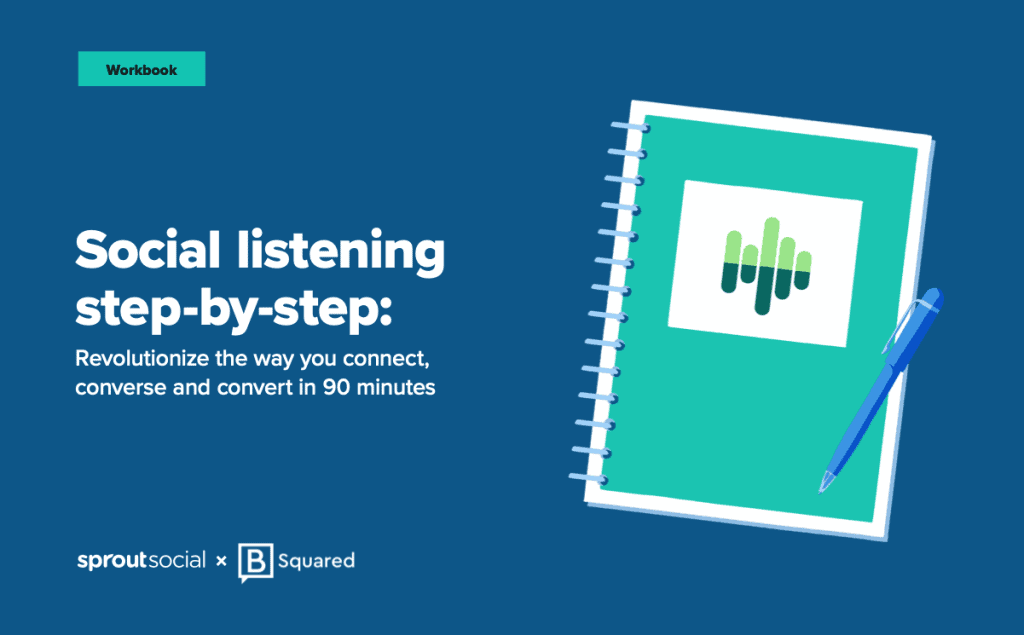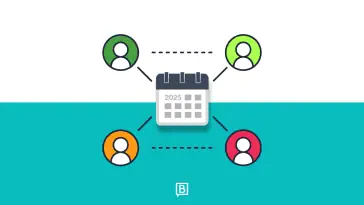A social care strategy for B2B brands is no longer optional—it’s essential. There. I said it.
I’m getting tired of the, ‘we’re B2B, it’s not the same‘ excuse!
With the increasing reliance on social media for communication, brands must have a solid plan for managing customer inquiries, complaints, and feedback across various social channels. Yes, even if you’re a B2B brand.
A well-executed social care strategy not only improves customer satisfaction but also strengthens brand loyalty and drives revenue.
In this comprehensive guide, we’ll explore what a social care strategy for B2B brands involves, why it’s crucial, and how to build an effective strategy tailored to your B2B audience.
What Is Social Care in B2B?
Social care refers to the practice of providing customer service and support through social media platforms.

For B2B brands, it goes beyond simply answering customer questions; it involves building relationships, managing reputations, and showcasing thought leadership in industry-relevant conversations.
Unlike B2C interactions, where the focus is on individual consumers, B2B social care centers on building and maintaining relationships with other businesses, often in more complex, high-stakes scenarios.
In B2B, a single relationship can translate into significant revenue, making social care an even more vital component of customer engagement.
Why Is a Social Care Strategy Important for B2B Brands?
Having a social care strategy for B2B brands is important for several reasons …
Brand Reputation
B2B buyers research extensively before making decisions. And guess which channel they increasingly use? Social media. Yes, even for B2B!
B2B buyers, increasingly from younger generations, are drawn to social media platforms. And 74% of B2B marketers worldwide have seen an increase in buyers using social media for B2B research and decision-making …”
Furthermore, negative feedback left unattended can damage your reputation and lose potential clients. Especially if your buyers are younger.
Relationship Building
Social media offers a unique opportunity to engage directly with decision-makers and influencers within other companies. And, according to Hubspot’s 2024 State of Sales Report:
Social media ranks fourth among the most effective sales channels …”
Revenue Growth
A strong social care strategy can help move prospects through the sales funnel faster by providing immediate answers to pressing concerns.
There are all kinds of stats around using social media as a B2B sales channel. For instance:
- Sales professionals with a strong social selling index on LinkedIn have 45% more sales opportunities than those who don’t.
- Audiences exposed to brand messages on LinkedIn are six times more likely to convert, according to data from the social company.
- In one LinkedIn study, 31% of sales reps using social selling reported closing deals worth over $500,000 without a single in-person meeting with the buyer.
Customer Retention
Timely responses to customer inquiries can foster loyalty and improve retention rates. Unlike disruptive sales messaging techniques, community conversations on social media focus on valuable consumer relationships.*
*As long as you use your social media channel for conversations that aren’t solely transactional!
What’s more, The 2023 State of Social Media Report found that 88% of business leaders agree social media data and insights are critical to customer retention and delivering exceptional customer care.
Key Components of a Social Care Strategy for B2B Brands
By now, you should be convinced that you need a B2B social care strategy. Let’s dive into getting started with your strategy next.
Developing an effective social care strategy for B2B brands involves several key components.
1. Define Your Objectives
Before creating your strategy, outline what you want to achieve. For my part, I mostly see B2B brands tying the below three social care goals to business outcomes.

For you, some common objectives for B2B social care might include:
- Improving customer satisfaction through timely responses.
- Enhancing brand visibility by engaging in industry-specific conversations.
- Increasing lead generation by being proactive in answering questions from potential clients.
- Reducing churn rates by offering exceptional customer service.
Having clear objectives will help guide your social care efforts and measure success.
2. Identify the Right Platforms
Not all social media platforms are created equal, especially for B2B brands.
While LinkedIn is often the go-to platform for B2B interactions, platforms like Twitter, Facebook, and even YouTube can also be valuable, depending on your audience.
You must intimately know your audience. If you don’t already, build an ‘Ideal Customer Profile’ or ICP.
For the sake of this article, let’s review the top four platforms mentioned.
1) LinkedIn
Obviously, LinkedIn is perfect for B2B networking, relationship building, and sharing thought leadership content. But it also gets the job done.
According to LinkedIn, 78% of businesses that use social selling outperform those that don’t.
2) Twitter
Useful for real-time interactions, monitoring industry trends, and responding to customer inquiries.
However, in light of recent changes at Twitter (now X), I’d say proceed here with caution.
Media Matters reported 50 of Twitter’s top 100 advertisers from 2022, that accounted for $750 million in revenue, had either cut back or stopped advertising entirely on the website.” [Source: Forbes]
3) Facebook
Though more B2C-focused, Facebook can be valuable for creating groups or forums for industry discussions. It’s worth noting that where we once went to Twitter (X) for news, that position has now been given to Facebook.

4) YouTube
Ideal for visual content and showcasing company culture, thought leadership, or behind-the-scenes moments, even in a B2B context.In fact,
As you can see, YouTube is the second biggest place where we go to get news. Additionally, it’s the second most effective social platform for content marketing (after LinkedIn).

Eighty-six percent of content marketers consider it at least somewhat effective. Not too shabby!
3. Create a Dedicated Social Care Team
To effectively manage your social care strategy, you need a dedicated team. Yes, dedicated. No, this is not the same as the marketing or social media marketing team.
That’s because social media moderation and social care are NOT the same.

Your social care team should:
- Monitor social media channels for mentions of your brand, both positive and negative.
- Respond promptly to customer inquiries, ideally within 24 hours.
- Engage proactively in relevant conversations about your industry or products.
- Use social listening to join conversations around your industry, brand, or competitors proactively.
Whether it’s an internal team or an outsourced solution (like us!), ensure that your social care representatives are trained and equipped to handle B2B-specific challenges.
4. Set Response Time Standards
Speed is crucial in social care. B2B clients expect quick responses, particularly when they’re in the decision-making phase.
Setting response time standards will ensure your team provides timely and consistent service.
For example, aim to:
- Respond to inquiries within one business day. We strive for an hour or less with most of our clients!
- Acknowledge complaints immediately, even if a full resolution takes longer.
- Offer real-time chat or messaging on your social platforms for urgent inquiries or troubleshooting.
5. Leverage Automation and AI
Automation tools can enhance your social care strategy for B2B brands by improving efficiency.
Consider using:
- Chatbots to handle simple, repetitive queries.
- AI tools to monitor and analyze social media conversations in real time.
- Automated workflows to assign inquiries to the appropriate team members.
While automation can save time, it’s essential to balance it with human interaction, especially for complex or high-value clients.
6. Monitor Social Media for Intent Signals
One of the most powerful aspects of social care for B2B brands is the ability to detect intent signals.
These are behaviors that indicate a potential client is interested in your product or service. For instance, if a user mentions a problem that your solution addresses, your team should step in with helpful information.
Identifying and responding to these signals quickly can turn prospects into leads.
For example, we tag all conversations on social media as acquisition or retention (gain or retain!) based on the user’s intent. Getting help with a product or service that’s already purchased would be tagged as such, while someone asking for sales support would be tagged as acquisition.
Here’s an example:

You’d be surprised how much of the social conversation surrounds sales!
7. Personalize Your Interactions
B2B buyers expect personalized service. When responding to inquiries on social media, avoid generic responses. Instead, tailor your messages to the specific client or company.
- Use the client’s name, the company name, and industry-specific language.
- Reference previous interactions or purchases where applicable.
- Address their unique needs and challenges, demonstrating your understanding of their business.
Personalization helps build trust, a critical factor in B2B relationships.
8. Develop a Crisis Management Plan
In B2B, negative feedback or public complaints can have serious consequences. Having a crisis management plan in place is crucial to minimize damage and protect your reputation.
Your crisis plan should include:
- Pre-written responses for common issues.
- A chain of command to handle escalation.
- Guidelines for addressing public complaints professionally and transparently.
By preparing in advance, you can manage crises quickly and effectively, preventing them from spiraling out of control.
9. Track Key Metrics
Tracking the success of your social care strategy is essential for ongoing improvement.
Some key metrics to monitor include:
- Response time: How quickly are you responding to inquiries?
- Customer satisfaction (CSAT) scores: Are your clients happy with the support they receive?
- Engagement rate: Are your social media interactions driving meaningful conversations?
- Lead conversion: How many social interactions lead to new business opportunities? How many result in providing excellent customer care (retention)?
Regularly reviewing these metrics will help you identify areas for improvement and fine-tune your strategy.
10. Use Social Listening Tools
Finally, social listening tools can be invaluable for monitoring conversations about your brand, competitors, and industry trends.

[Source: Check out our free social listening workbook!]
Tools like Sprout Social or Brandwatch can help you keep a pulse on relevant discussions and respond in real-time.
By staying ahead of the conversation, you can proactively address concerns, highlight success stories, and position your brand as a thought leader.
Building Your B2B Social Care Strategy
Creating a robust social care strategy for B2B brands is a critical step in improving customer relationships, protecting your brand’s reputation, and driving business growth.
By setting clear objectives, identifying the right platforms, personalizing your interactions, and leveraging tools like AI and social listening, you can build a strategy that not only meets but exceeds client expectations.
In the B2B world, social care isn’t just customer service—it’s a key component of long-term success.
Latest posts by Brooke B. Sellas (See All)
- Social Media Customer Psychology: Understanding Expectations Elevates Social Care - November 12, 2025
- Seeking A Social Media Mentor? How To Find The Right One To Help You Boost Results That Matter - November 5, 2025
- Cyber Week Social Strategy: Maximize Engagement While Your Audience Shops Online - October 29, 2025















